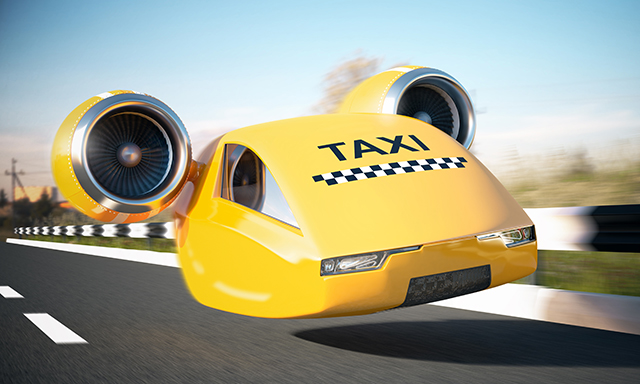
The company, Alaka'i Technologies, unveiled the passenger-carrying model of their "oversized drone" near Los Angeles. They call it the Skai (pronounced "sky"), a drone with six rotors that can take off and land vertically like any other drone. It currently has a range of 400 miles, a carrying capacity of 1,000 pounds and a top speed of 120 mph.
While the model they showcased can carry up to five people (including the pilot), the manufacturers claim that Skai can also be converted into a cargo carrier, a flying taxi and even an air ambulance.
What also makes the rollout of Skai promising is its use of alternative fuel sources. While most drones are powered by large batteries that add a lot of weight, Skai gets its energy from hydrogen fuel cells. This makes it much lighter than other electric drones and gives it more flexibility in its use. This also gives Skai the range and carrying capacity it needs to be economically viable, said the company.
"We just couldn't get to the point where we could have enough batteries to get to the payload that we knew we needed," said CEO Stephan Hanvey of the choice to switch to hydrogen fuel cells.
A newer, better and larger drone
An on-board pilot would control Skai using a pair of joysticks. But, according to Hanvey, the technology already exists to fly it remotely (by a pilot that isn't onboard) or autonomously (without the need for human guidance).
The company and others like it have a lot of hurdles to jump through with the Federal Aviation Administration (FAA) to get approval for Skai's commercial takeoff, according to legal experts such as Thaddeus Lightfoot, a lawyer working for a firm that helps companies navigate FAA rules.
"Dronelike vehicles such as the Skai must first simply prove their airworthiness, like any common plane," said Lightfoot. "After that, getting commercial certification is another convoluted process."
Regulators are still busy attempting to deal with smaller drones such as the ones flown by hobbyists, photographers and filmmakers. The FAA just eased restrictions on flying small drones over crowds and at night. They're going to have more discussions before Skai can start taxiing over American skies.
"The technology is interesting, but the regulatory road will be very long," said Lightfoot. According to him, the idea of allowing people to fly in large aircraft controlled remotely or even autonomously is "well outside the current regulatory regime."
While Alaka'i waits for FAA approval, they're planning a test flight near their Massachusetts headquarters. The Skai holds promise, but Alaka'i Technologies isn't entirely optimistic about its quick rollout. It may take up to 10 years before a fleet of Skai are allowed to commercially operate. However, the company hopes that it can be used for emergency situations beforehand to prove its usefulness. (Related: Air drop delivery: Drones are being used in Rwanda to deliver blood and medicine to remote hospitals.)
Lightfoot hopes to see Skai aircraft being used by first responders to send emergency supplies to disaster-hit areas. "It could be used as an ambulance to evacuate people," Hanvey also said. He also mentioned that, if Skai were outfitted with a transmitter, it could serve as a mobile cell tower by hovering over a neighborhood to provide emergency communication services.
Sources include:
Please contact us for more information.























